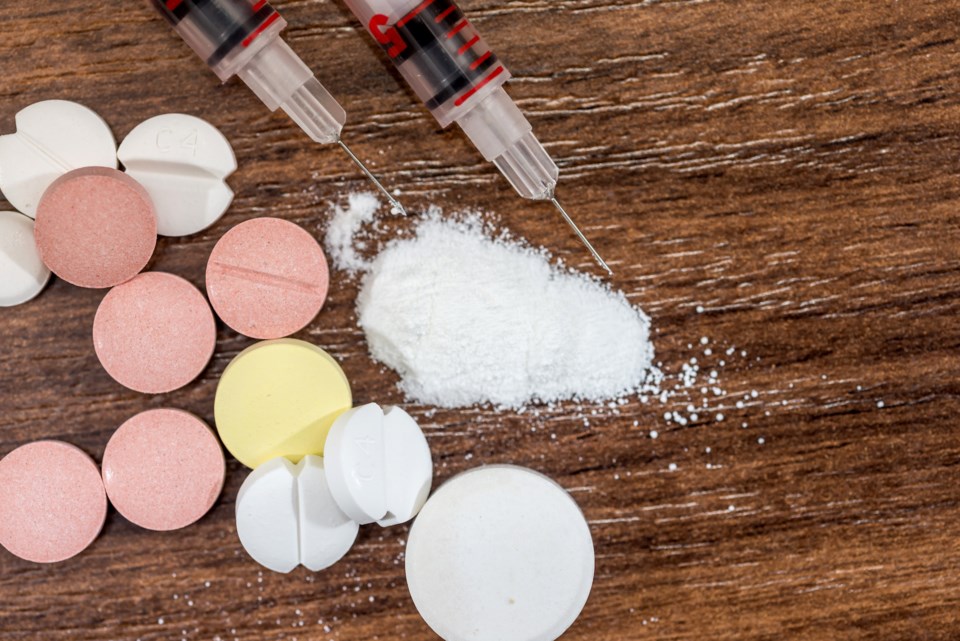The stories are similar: before they were searched by police, young people swallowed whatever substance they had on them for personal use, to avoid “catching” additional charges. Each of us has heard them repeatedly while working with youth.
This impulsive ingestion has significant ramifications for youth, families and communities. It is particularly dangerous for youth, who may not have built up enough tolerance for the substance, or are unaware of what they have actually purchased. These youth often have already taken another drug before they encounter police, and mixing more than one substance, or taking more of the same substance, is known to lead to worse outcomes in youth.
This leads us to ask: why are police still charging people for possession of substances for personal use under the Controlled Drugs and Substances Act (CDSA)? In Canada in 2018, more than 6,300 youth were arrested or had interactions with police for drug possession.
Toxic candy
Alprazolam (Xanax) is a type of benzodiazepine medication often used to treat anxiety and panic disorders, but is also used recreationally by young people. When ingested in a toxic amount — which varies by age and weight — it can lead to coma, slow and ineffective breathing and even death.
As manufacturing of illicit substances evolves, so does the appearance, content and strength of those substances. Alprazolam pills pressed to look like SweeTARTS and other candies have been found in Canadian communities. A “sweet tart” or “xanie tart” varies in its potency and may contain other substances including fentanyl and heroin. If impulsively ingested by a youth who is not accustomed to the drug, the results could be life-altering.
A health issue, not a criminal justice issue
Since its inception, the Nova Scotia Legal Aid youth office has assisted youth with simple possession charges, contrary to s.4(1) of the Controlled Drugs and Substances Act. However, in the past two years, no youth legal aid lawyer has had this charge go beyond the preliminary stages of court proceedings. Federal Crown attorneys have exercised their discretion to withdraw or refer simple possession charges to restorative justice programs. As criminal charges can be dismissed if a youth completes restorative justice, they avoid the stigmatization that may come with a youth court record.
Updates to the Public Prosecution Services of Canada (PPSC) deskbook appear to reflect a crystallization of this conventional practice and recognize that simply possessing and using substances ought to be dealt with through the health system, and not the criminal justice system. Unfortunately, as long as police can arrest a youth and lay the charge of simple possession, the health risks we’ve each seen in social work, the emergency room and legal aid will remain unchanged.
The risk of being handcuffed by a police officer, being charged or the thought of being obliged to appear in a courtroom can be extremely consequential to a child. Most young people have very little insight into the workings of the justice system. It is likely they will assume that being found with a substance like Xanax will land them in a locked facility.
They may already be under the influence of a substance when they realize they are at risk of a police officer finding it in their possession. This clouds their judgement in an already stressful situation and further increases the risk that they will consume an unsafe amount of a substance to get rid of it, potentially leading to serious harm or death.
A 2018 policy brief on decriminalization by the Canadian Centre on Substance Abuse and Addiction examines how other countries approach possession and connection back to supportive health programs. The Canadian Association of Chiefs of Police supports the decriminalization of personal, illicit drug possession, and the Public Prosecution Service of Canada is taking steps to decrease the likelihood of conviction for personal, illicit drug possession.
Until further decriminalization efforts can be made, what can be done now?
A safer alternative
Consider the impact of police officers offering people the chance to turn over any illicit substances without consequence, regardless of previous charges or any existing legal conditions requiring them to refrain from substances.
This practice may avoid accidental overdoses and reduce the risk of medical complications while youth are in the custody of police, sheriffs or correctional officers, most of whom do not have the training, tools or time needed to treat a person experiencing an overdose. It may also decrease the risk of accidental overdose when released from custody, should they be remanded into forced sobriety.
This change in practice could help address the stigma around substance use, which is a barrier to seeking help. Analyzing substances handed over could provide life-saving information and increase the likelihood of apprehending those who manufacture and traffic these substances.
Given the recognition that substance misuse is a health and social issue, not a criminal issue, we hope that police officers will use their discretion and offer a safer choice for youth.
Like the Good Samaritan law that ensures people will not be criminalized for making sure another receives proper medical attention, such a practice would only be useful if those affected know about it. Letting people know they will not be charged for their personal substances will take time, communication and acceptance of the best practice research on substance use disorders.
This article was co-authored by Paul Sheppard, a youth lawyer with Nova Scotia Legal Aid in Halifax.![]()
Kristyn Anderson, PhD (Health) student, MSW, RSW, RMFT, Dalhousie University and Kirstin Weerdenburg, Pediatric Emergency Physician, Faculty of Medicine, Dalhousie University
This article is republished from The Conversation under a Creative Commons license. Read the original article.
